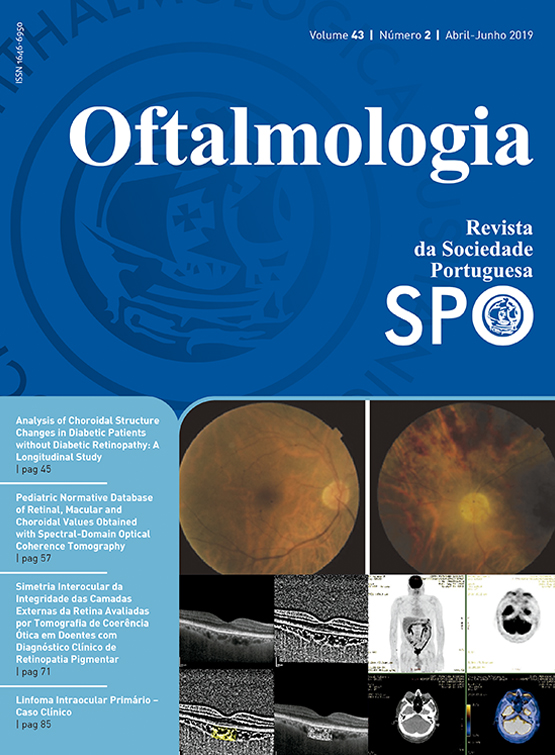EPISCLERAL BRACHYTHERAPY IN PORTUGAL:
LESSONS LEARNED AFTER 100 PATIENTS
DOI:
https://doi.org/10.48560/rspo.15200Abstract
PURPOSE: To evaluate the Portuguese Reference Center practice of Episcleral Brachytherapy (EBT) for uveal melanoma, with respect to local control, survival rates, metastatic rates and side effects; and compare those results with the international literature.
MATERIAL AND METHODS: Prospective and consecutive study of patients referred to the Ocular Oncology Reference Center, Coimbra treated with EBT between November 2013 and September 2018. Follow-up data was collected regarding local control, survival, distant metastasis and side effects from treatment. Analysis was performed on factors influencing treatment outcomes and radiation side-effects.
RESULTS: A total of 100 patients underwent EBT, but only 98 had a follow-up longer than 2 months.Ninety-six percent of patients achieved local control and the incidence rate of treatment failure was 2.2/100 person-years. The incidence rate of mortality was 6.0/100 person-years and for developing metastasis was 7.3/100 person-years. The most frequent radiation side-effect was cataract and the incidence rate for the development of radiation retinopathy was 31.5/100 person-years.
CONCLUSIONS: Our results demonstrate excellent clinical outcome for local control after treatment with 125I EBT, with satisfactory overall survival and metastasis-free survival rates. The rate of ocular toxicity is acceptable, considering the high rates of local control and globe preservation. Therefore, EBT is a valid option for globe-sparing treatment in opposition to enucleation, with the advantage of better cosmetic results.
Downloads
Downloads
Published
How to Cite
Issue
Section
License
CC BY
Do not forget to download the Authorship responsibility statement/Authorization for Publication and Conflict of Interest.
The article can only be submitted with these two documents.
To obtain the Authorship responsibility statement/Authorization for Publication file, click here.
To obtain the Conflict of Interest file (ICMJE template), click here







